PorNOgraphyX is Job Hablo’s first solo exhibition. A collection of works in different media, all featuring the naked body, both of female models and of the artist. In his exhibition statement, Hablo wrote that he intends to separate the association of the nude body from the stereotypes of pornography even using a portmanteau of the word “Pornography” and “x” a symbol often seen in many posters signifying “no” or “stop’. The display of female nudity, more than the nudity of the artist, invites criticism. But to remove the artist from his background before undressing his art, as he quite so bared, is to impose upon him the intentions of other male image-makers who dared use the physicality of the female body as mere objects.
Prior to joining art exhibitions, Hablo was visible in the Iloilo City’s gig scene as the keyboardist of the alternative, rap metal band Benigno. He is also an avid fan of hip hop music and this is evident in his photography and paintings. His earlier paintings feature icons that can be associated with hip hop culture. He even composed and rendered his earlier paintings like an album cover.
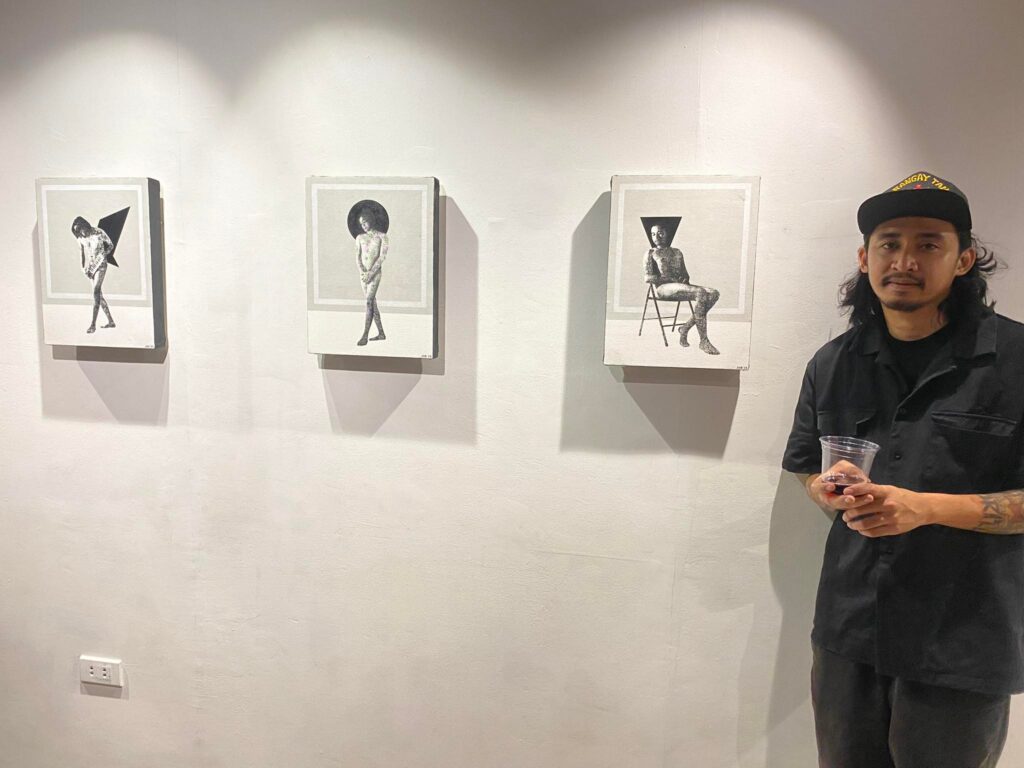
In 1975, filmmaker Laura Mulvey wrote an essay, Visual Pleasure and Narrative Cinema where she argues using the language of psychoanalysis that male is the bearer of the look and women are objects to be looked at, likening her to a spectacle. Similarly, nude has become an argument used to protest for women issues especially during the waves of feminism in the 1970s. Guerilla Girls famously questioned “Do women have to be naked to get into the Met. Museum?” The text is superimposed against the image of a reclining nude woman from a painting by Ingres. The female nude is wearing a Gorilla mask, an icon often used by the group. Beside the image is the statistics that reads “Less than 5 % of the artists in the Modern Arts section are women, but 85 % of the nudes are female.” And when nudity is being discussed, another subject that begs to be discussed is pornography. Can pornography and art be mutually exclusive? When does art become pornography? And why images that featured the naked body can be considered art, as in Egon Schiele or Robert Mapplethorpe.
There are many layers in this exhibit that need to be uncovered. But the gaze becomes apparent because Hablo, a male artist, supposes authority on female bodies being able to dictate the poses, clothing, spaces that relate to the women in his paintings. He is the one framing how they are being looked at. In one of the paintings “Feeling Blissed 2” the naked woman is sitting on a chair, her face is blacked out using paint but her body is facing the audience. Another painting, “I might be somewhere else existing” features another naked female slightly arching her back, with her chest tucked out, and buttocks toward the audience. Yet another suggestive pose, is in another painting called “3 AM”. The naked female is on the bed, face cut out by the paint, her thigh slightly bent on top of the other slightly twisting towards the audience. The viewer is dictated by their lived sexual experience to fill in the moments of before and after these poses.
Hablo’s women are faceless. Their faces are concealed, by a shirt, by black paint, and by other parts of her body. Why must these faces be covered when the intention is to glorify the beauty of the human body? Covering of the face is considered as protection. Why must these naked females be protected from the viewer? These are the questions that may arise in looking at these images. The answer to these questions may seem imaginative, as opposed to the sexual nature of responses that psychologists observed in pornography. With this, the perception that these images are done purely with artistic intentions may be deduced.
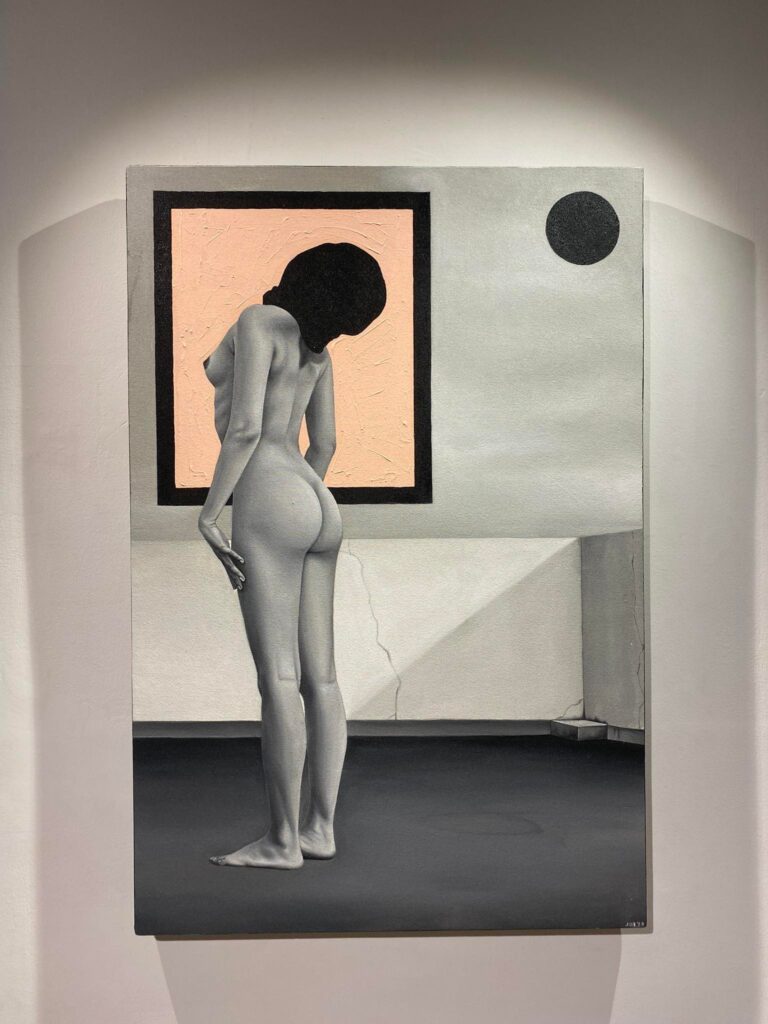
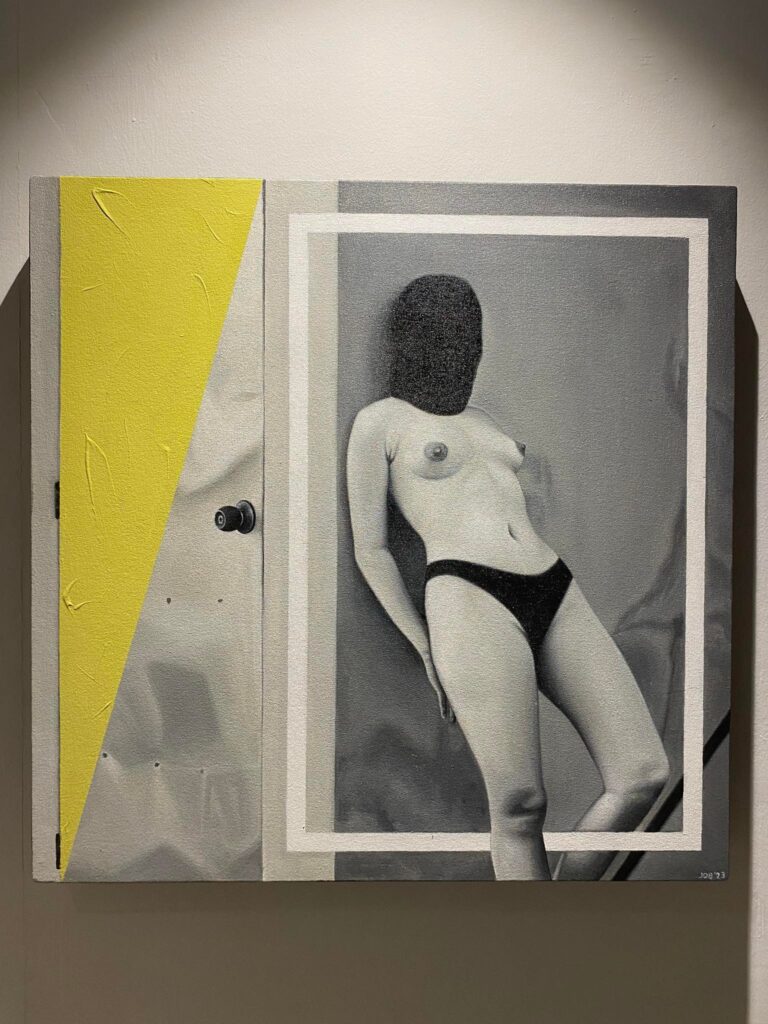
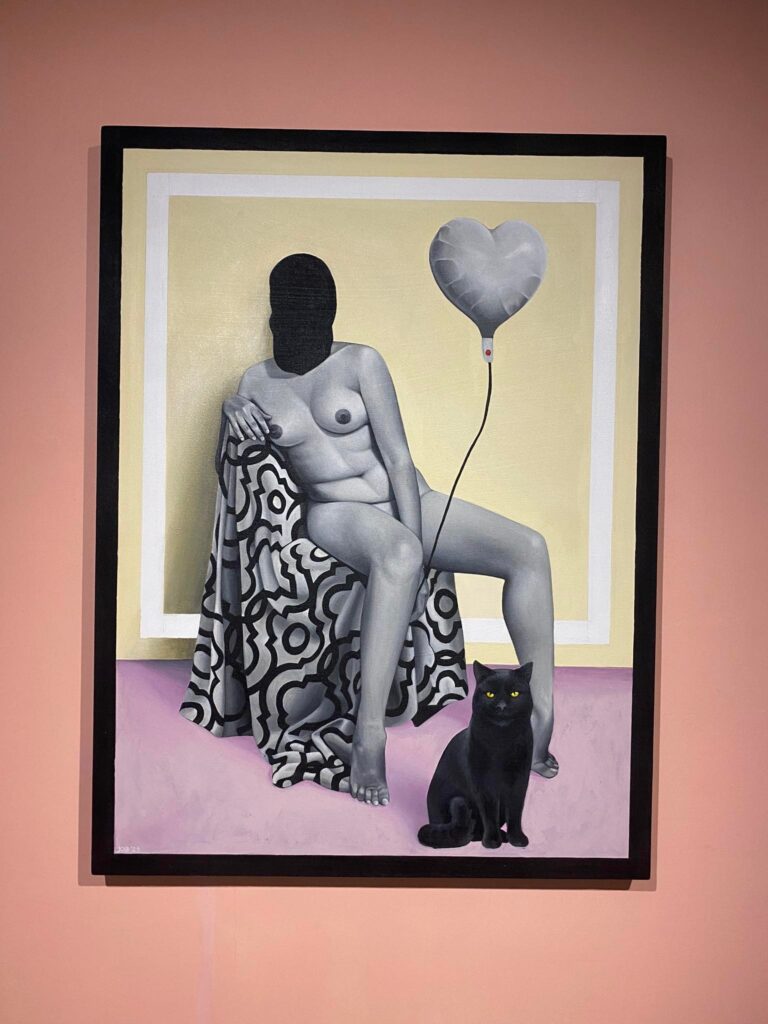
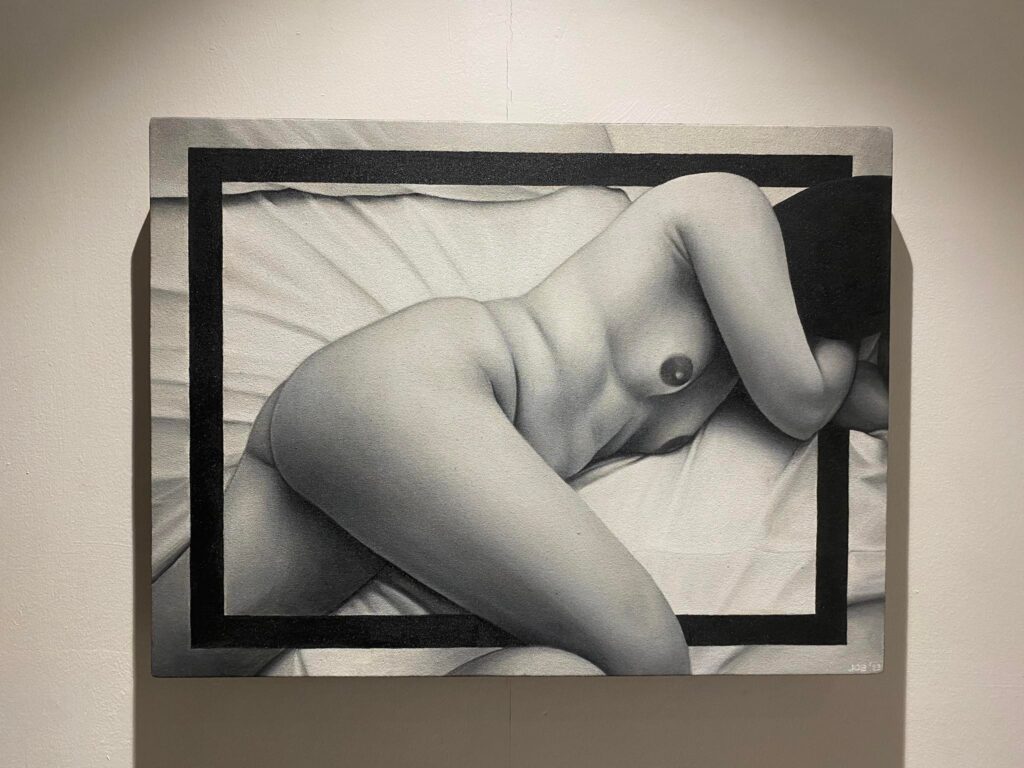
So why are the women in Job Hablo’s paintings naked? What is wanting in these images is this very clarification from the artist which may perhaps protect his paintings against any interpretation, apart from the exhibition statement’s desire to separate the naked body from the judgment of the onlooker. When these paintings are removed from the exhibition, what will become of its meaning? There are already too many images of naked women out there, and the strong assertion of women not to be stereotyped by men should create caution to those who dare handle themes such as the body.
In the institutional definition of art, the institution makes the legitimization of making an object as art. Although curatorial work is not something new in Iloilo, the meaning of the word has loosely been relegated into the act of setting up an exhibition. PorNOgraphyX is an opportunity to look into the curatorial practices in Iloilo City and examine the ways in which “care” for the art and artists are negotiated by institutions. Should a spotlight be cast to this exhibition during Women’s History Month? How are these images communicated to the gallery audience? Art managers can have a say on this conversation. In the end, this exhibition is a product of its environment, the need for discussions on semiotics, and the need for curatorial interventions in our institutions.